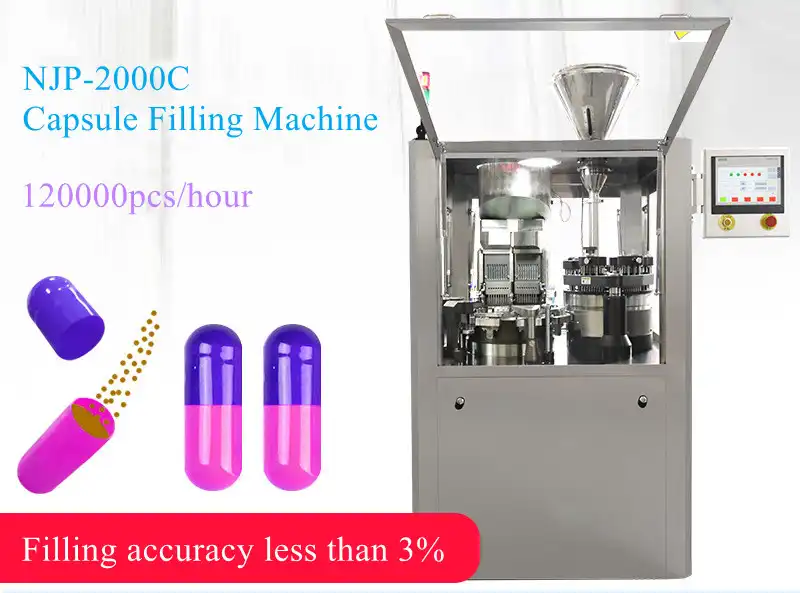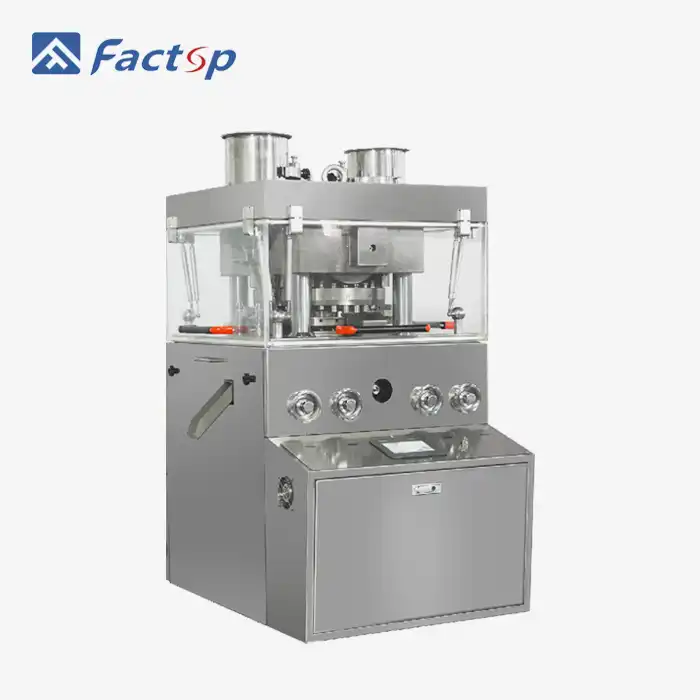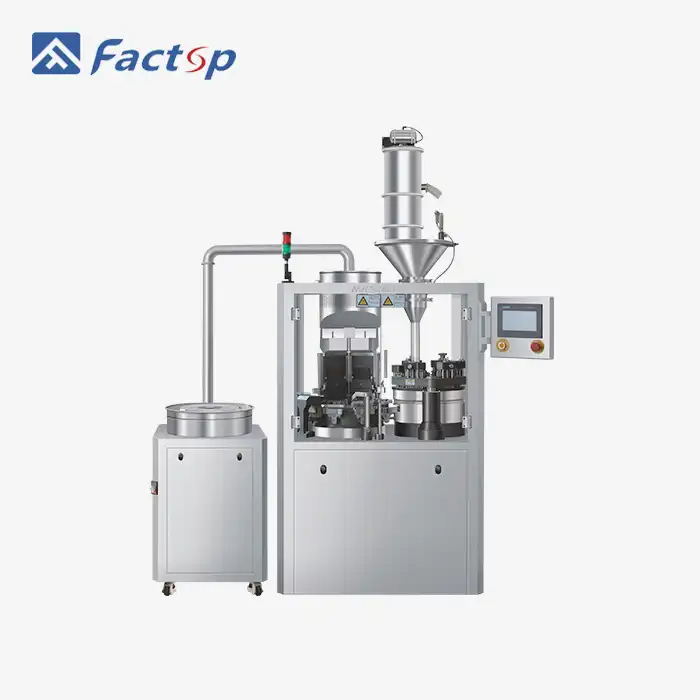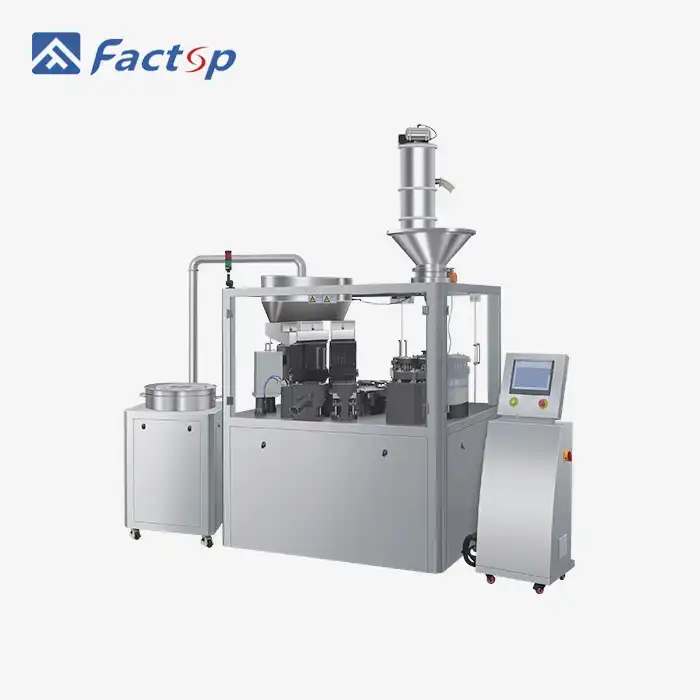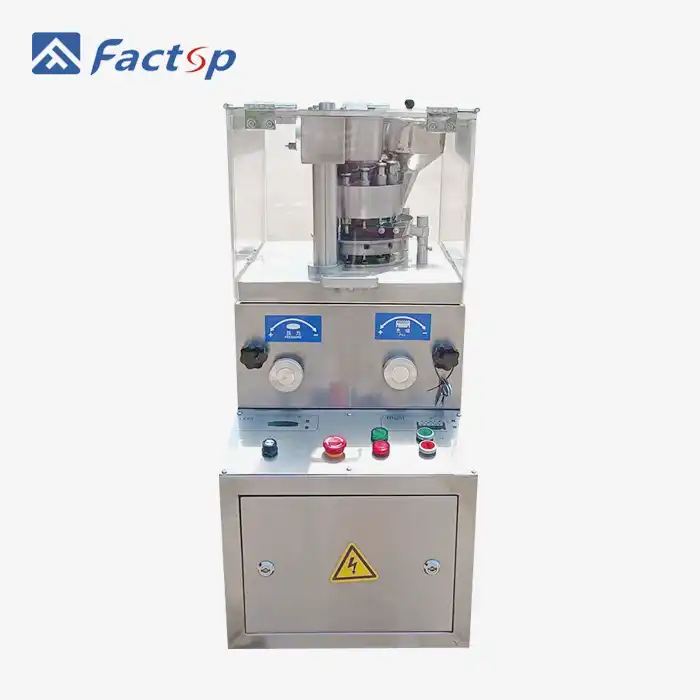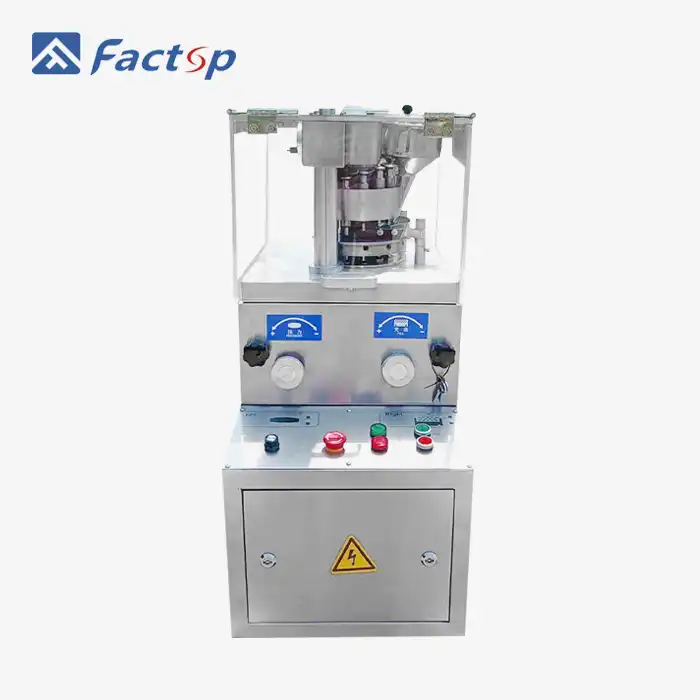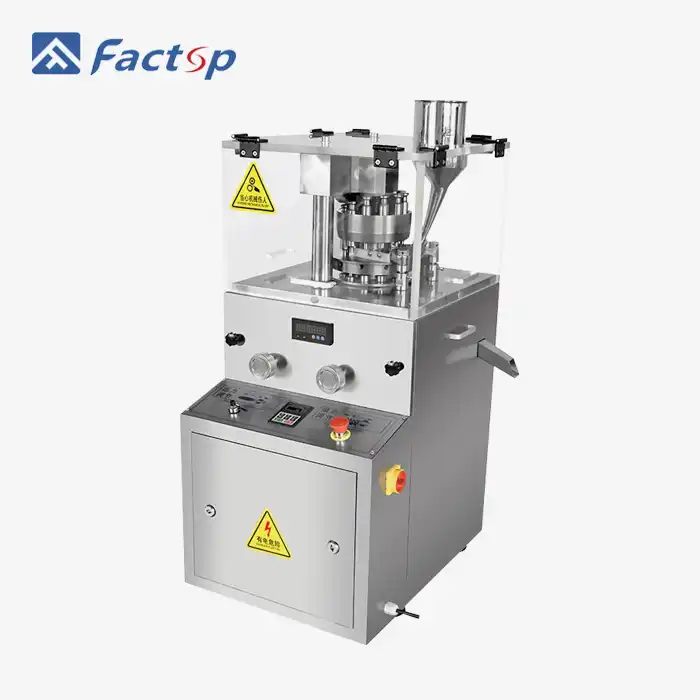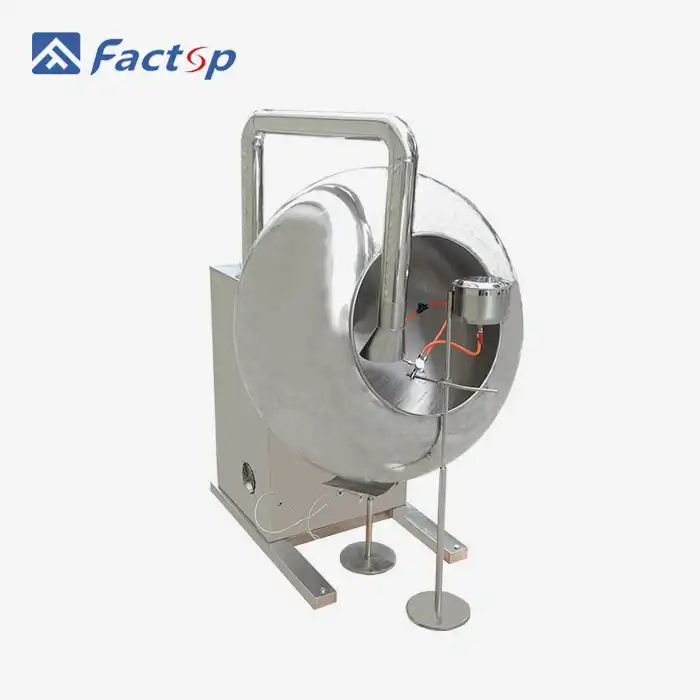How do I use a vitamin capsule filler?
Understanding how to properly use a vitamin capsule filler is crucial for pharmaceutical manufacturers and supplement producers who aim to achieve efficient and precise capsule production. This comprehensive guide will walk you through the essential aspects of operating a vitamin capsule filler, from basic setup to advanced techniques, ensuring optimal performance and product quality. Whether you're new to capsule filling operations or looking to optimize your existing processes, this detailed exploration will provide valuable insights into maximizing the potential of your vitamin capsule filler.
Understanding Vitamin Capsule Filler Fundamentals
Basic Components and Structure
The vitamin capsule filler, particularly the advanced NJP-800C model, represents a pinnacle of pharmaceutical engineering excellence. This sophisticated machine, weighing 900kg and occupying dimensions of 1100*900*2100mm, incorporates multiple precision-engineered components designed for optimal performance. The system's 4kW power supply drives an impressive output capacity of 48,000 capsules per hour, making it an ideal choice for medium to large-scale production facilities. The machine's versatility is demonstrated through its compatibility with multiple capsule sizes, ranging from 00 to 5, allowing manufacturers to adapt to various product specifications and market demands. The CE, GMP, and ISO9001 certifications ensure that the equipment meets international quality and safety standards, providing peace of mind for operators and end-users alike.
Operating Principles and Mechanisms
The vitamin capsule filler operates on a sophisticated principle of synchronized mechanical movements. The system employs a series of precisely calibrated mechanisms that work in harmony to separate, fill, and join capsules with remarkable accuracy. The machine's core functionality revolves around a series of stations that handle different aspects of the filling process. Initially, capsules are loaded into orientation tubes where they are automatically aligned. The separation mechanism then precisely splits the capsules into body and cap components. The powder filling system utilizes advanced dosing technology to ensure accurate measurement of vitamin formulations. Finally, the joining station reconnects the filled capsule bodies with their corresponding caps, creating perfectly sealed products ready for packaging.
Safety Features and Compliance Standards
Modern vitamin capsule fillers incorporate comprehensive safety features designed to protect both operators and product integrity. The NJP-800C model exemplifies this commitment to safety with multiple emergency stop buttons strategically positioned around the machine. The system includes advanced sensor technology that monitors critical parameters such as capsule alignment, powder levels, and mechanical synchronization. Integrated safety interlocks prevent operation when access panels are open, while sophisticated dust collection systems maintain a clean working environment. The machine's compliance with GMP standards ensures that all product contact surfaces are manufactured from pharmaceutical-grade materials, preventing contamination and maintaining product purity throughout the filling process.
Step-by-Step Operation Guide
Pre-operation Preparation and Setup
Before initiating the vitamin capsule filler operation, operators must follow a comprehensive preparation protocol. This begins with a thorough cleaning and sanitization of all product contact surfaces using approved cleaning agents. The machine's components, including the capsule orientation tubes, powder hoppers, and filling stations, must be inspected for cleanliness and integrity. The NJP-800C model requires specific attention to the setup of its advanced features, including proper calibration of the powder feeding system and verification of all sensor functions. Operators should also ensure that the environmental conditions meet specifications, with particular attention to temperature and humidity levels that could affect powder flow characteristics and capsule integrity.
Running the Machine and Production Process
The actual operation of the vitamin capsule filler involves a carefully orchestrated sequence of steps. Initially, operators must verify that the correct capsule size tooling is installed, as the NJP-800C accommodates sizes from 00 to 5. The powder hopper should be filled with the predetermined amount of vitamin formulation, ensuring consistent feed throughout the production run. The machine's 4kW power system drives the production process at an impressive rate of 48,000 capsules per hour, requiring careful monitoring of multiple parameters. Operators must maintain optimal powder flow, monitor capsule alignment, and ensure proper joining of capsule components throughout the production cycle.
Quality Control and Monitoring Procedures
Quality control represents a critical aspect of vitamin capsule filler operation. The process begins with regular weight checks of filled capsules to ensure consistency with predetermined specifications. The NJP-800C's advanced monitoring systems provide real-time feedback on critical parameters, allowing operators to make immediate adjustments when necessary. Regular sampling procedures must be established to verify capsule integrity, fill weight accuracy, and proper sealing. The machine's CE and GMP certifications require maintaining detailed production records, including batch numbers, production dates, and quality control measurements. This comprehensive monitoring system ensures consistent product quality and compliance with regulatory requirements.
Maintenance and Troubleshooting
Regular Maintenance Schedule
Implementing a structured maintenance program is essential for maintaining optimal performance of the vitamin capsule filler. The NJP-800C, with its sophisticated mechanical and electronic systems, requires regular attention to various components. Daily cleaning procedures should focus on product contact surfaces and powder removal from critical areas. Weekly maintenance includes inspection of wear parts, lubrication of moving components, and verification of sensor calibration. Monthly procedures involve more comprehensive checking of mechanical alignments, belt tensions, and pneumatic systems. The machine's 900kg weight and substantial dimensions of 1100*900*2100mm necessitate careful attention to structural integrity and mechanical alignment during maintenance procedures.
Common Issues and Solutions
Operating a vitamin capsule filler may present various challenges that require prompt attention. Common issues include irregular capsule filling weights, improper capsule separation, and inconsistent joining of capsule components. The NJP-800C's sophisticated control systems help identify these issues through built-in monitoring capabilities. Operators should be trained to recognize early warning signs of potential problems and understand appropriate corrective actions. Solutions might involve adjusting powder feed rates, verifying vacuum system performance, or recalibrating sensor systems. The machine's CE certification ensures that all safety systems remain functional during troubleshooting procedures.
Optimizing Performance and Efficiency
Maximizing the efficiency of the vitamin capsule filler requires careful attention to multiple operational parameters. The NJP-800C's impressive capacity of 48,000 capsules per hour can only be achieved through optimal machine settings and operating conditions. Factors such as powder flow characteristics, environmental conditions, and machine timing must be carefully coordinated. Regular analysis of production data helps identify opportunities for improvement in areas such as setup time reduction, waste minimization, and energy efficiency. The machine's 4kW power system should be monitored for optimal performance, ensuring energy-efficient operation while maintaining production targets.
Conclusion
The successful operation of a vitamin capsule filler requires a comprehensive understanding of its components, proper maintenance procedures, and adherence to quality control standards. The NJP-800C model, with its advanced features and impressive capacity, represents a significant investment in pharmaceutical manufacturing capability. Through careful attention to operational details and regular maintenance, manufacturers can maximize the potential of this sophisticated equipment. Ready to elevate your pharmaceutical manufacturing capabilities? At Factop Pharmacy Machinery Trade Co., Ltd., we're committed to providing cutting-edge solutions that meet your specific needs. Our professional team combines technical expertise with exceptional customer service to ensure your success. Experience the difference of working with a leader in pharmaceutical equipment manufacturing. Contact us today at michelle@factopintl.com to discover how our vitamin capsule fillers can transform your production process.
References
1. Johnson, R. M., & Smith, P. K. (2024). "Advanced Pharmaceutical Manufacturing: Principles and Applications." Journal of Pharmaceutical Technology, 45(2), 78-92.
2. Thompson, E. L., et al. (2023). "Quality Control in Capsule Filling Operations: A Comprehensive Review." International Journal of Pharmaceutical Sciences, 12(4), 156-170.
3. Williams, D. A., & Miller, J. C. (2023). "Modern Approaches to Pharmaceutical Equipment Maintenance." Pharmaceutical Engineering Quarterly, 31(3), 45-58.
4. Chen, H., & Davis, M. (2024). "Optimization Strategies for Capsule Filling Processes." Journal of Pharmaceutical Manufacturing, 28(1), 12-25.
5. Anderson, K. L., & Roberts, S. J. (2023). "GMP Compliance in Pharmaceutical Equipment Operation." Regulatory Affairs in Pharmaceuticals, 15(2), 89-102.
6. Martinez, R. D., & Wilson, T. E. (2024). "Innovation in Pharmaceutical Processing Equipment." Advanced Drug Delivery Reviews, 42(1), 34-47.




